As the world becomes increasingly interconnected, the online presence of nonprofits has evolved from a supplemental aspect to an absolute necessity. It’s the virtual storefront where missions are communicated, stories are shared, and connections are forged. A slow-loading website can be the bottleneck that impedes these critical interactions, jeopardizing the very essence of a nonprofit’s outreach and impact.
In this blog post, we dive deep on a journey through the digital corridors of philanthropy, shedding light on a fundamental yet often overlooked aspect—the need for speed. We explore how website speed stands as a linchpin in the success of nonprofits’ online endeavors. More than a technological checkbox, it’s a strategic imperative that shapes the user experience, influences fundraising outcomes, and aligns seamlessly with the overarching goals of organizations committed to making a difference.
We will delve into the stories of eight nonprofits that have not just recognized but mastered the art of digital velocity. These organizations have excelled in optimizing their websites for speed, providing a seamless online experience for their visitors.
Why Website Speed Matters for Nonprofits
In the fast-paced digital landscape, the speed at which a nonprofit’s website loads is far more than just a technical detail; it is a crucial factor that can significantly impact the organization’s success. The importance of website speed for nonprofits can be understood through its influence on three key aspects: user experience, fundraising efforts, and the connection to overall mission and goals.
1. Impact on User Experience
When visitors land on a nonprofit’s website, they expect a seamless and efficient experience. A smooth and responsive user experience reflects positively on the nonprofit, making it more likely that visitors will explore the site, learn about the organization, and ultimately support its mission.
2. Influence on Fundraising Efforts
Speedy navigation through donation processes makes it easier for supporters to contribute, increasing the likelihood of successful fundraising campaigns. In essence, a fast website streamlines the donation journey, encouraging more visitors to convert into valuable donors.
3. Connection to Overall Mission and Goals
Whether disseminating information about projects, sharing success stories, or advocating for a cause, a swift and responsive website strengthens the nonprofit’s ability to connect with its community.
In conclusion, the speed of a nonprofit’s website is not merely a technical detail but a strategic asset that influences user engagement, fundraising success, and the fulfillment of the organization’s mission. As we explore nonprofits with blazing-fast websites, it becomes evident that prioritizing website speed is a key ingredient for achieving impact and success in the digital age.
Top 8 High-Speed Nonprofit Websites
1. The Nature Conservancy
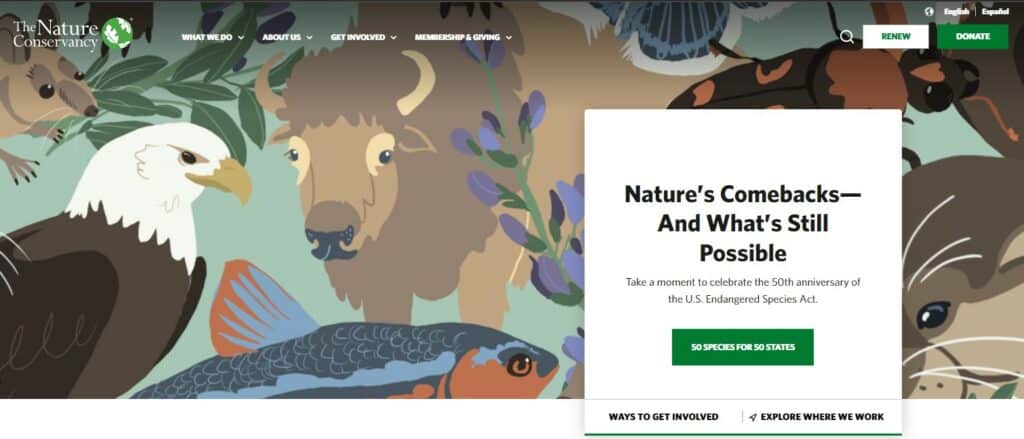
The Nature Conservancy, a global environmental organization, stands as a beacon of conservation. With a commitment to safeguarding nature, its website is a gateway to a world of ecological stewardship.
Boasting an impressive average loading time of 1.4 seconds, The Nature Conservancy’s website sets the pace for online efficiency. This swift performance is attributed to the strategic use of a Content Delivery Network (CDN) and meticulously optimized images.
The rapid loading time is more than a technical feat—it’s a catalyst for advancing The Nature Conservancy’s mission. By providing seamless access to information, stunning visuals, and interactive content, the website enhances audience engagement, fostering a deeper connection with the cause of environmental preservation.
2. World Wildlife Fund
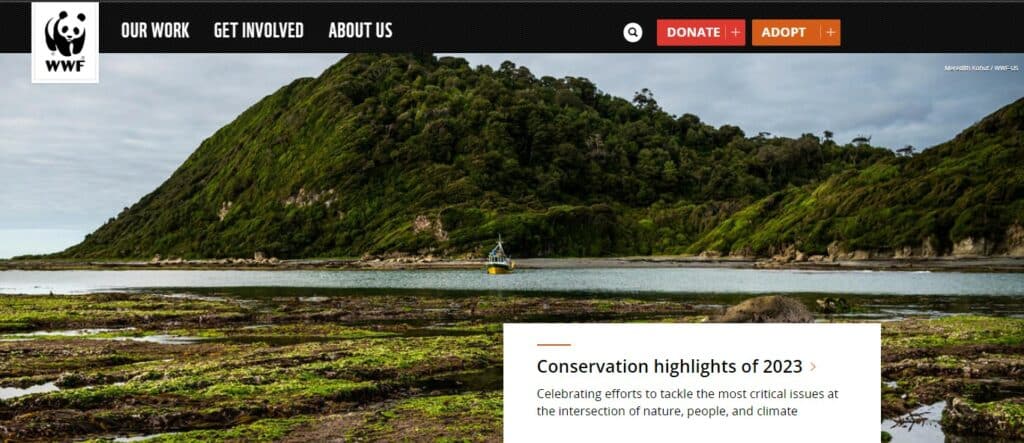
At the forefront of global wildlife conservation, the World Wildlife Fund (WWF) is a powerhouse of environmental advocacy. Its website serves as a digital sanctuary, embodying the organization’s commitment to a sustainable planet.
With an impressive average loading time of 1.5 seconds, WWF’s website exemplifies efficiency in the digital realm. The swift performance is attributed to a well-utilized Content Delivery Network (CDN) and streamlined JavaScript implementation.
Beyond technical prowess, the rapid website speed directly contributes to the WWF’s mission. Visitors experience seamless access to vital information, compelling visuals, and interactive elements, fostering heightened engagement and a strengthened connection to the global conservation cause.
3. St. Jude Children’s Research Hospital
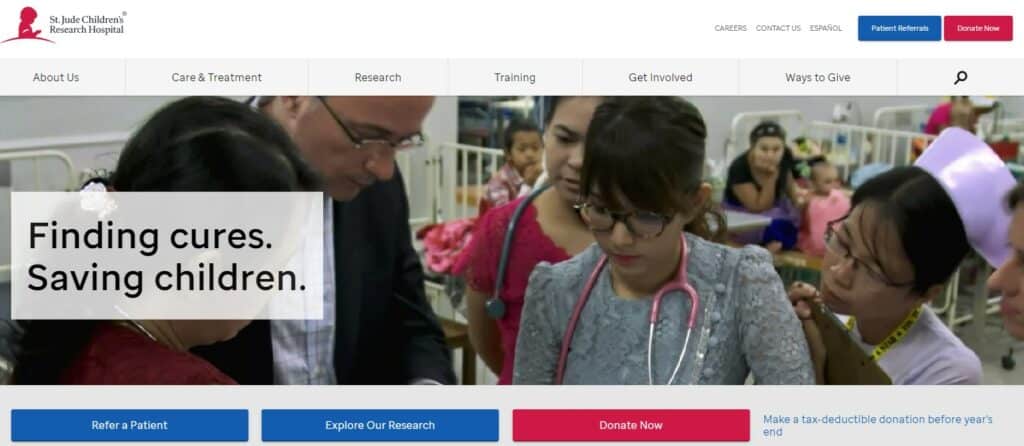
St. Jude Children’s Research Hospital, a beacon of hope in pediatric healthcare, extends its mission online. The website is a digital haven, embodying the organization’s dedication to eradicating childhood diseases.
Boasting an average loading time of 1.6 seconds, St. Jude’s website combines speed and purpose. The nimble performance is owed to the strategic use of a Content Delivery Network (CDN) and finely optimized images.
The swift website is not merely a technical achievement; it directly supports St. Jude’s mission. Fast access to critical information, heartwarming stories, and donation avenues enhances audience engagement, strengthening the community’s bond with the hospital’s lifesaving initiatives.
4. UNICEF
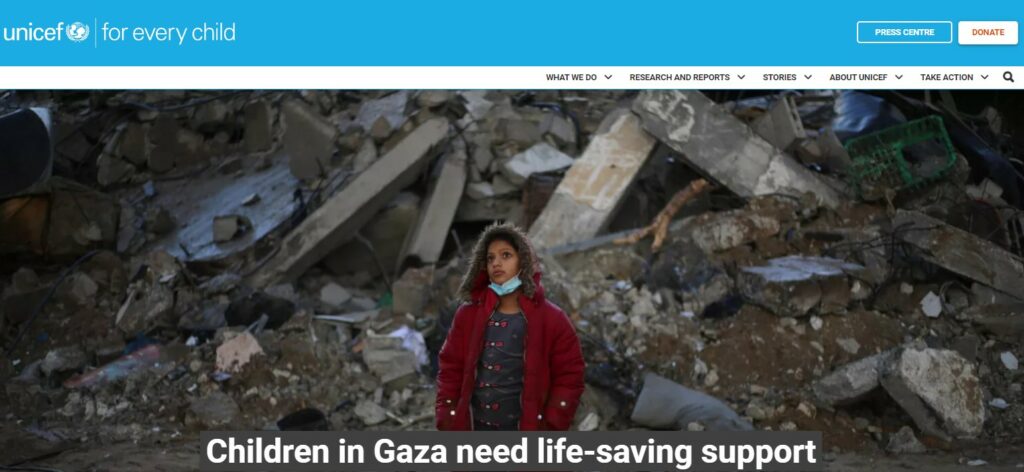
UNICEF, a global force for children’s rights and well-being, extends its impact through a thoughtfully crafted website. This digital platform mirrors the organization’s dedication to ensuring every child’s right to survival, education, and protection.
With an average loading time of 1.7 seconds, UNICEF’s website epitomizes efficiency. The swift performance owes itself to a strategic Content Delivery Network (CDN) implementation and judicious use of JavaScript.
Beyond speed, the website directly amplifies UNICEF’s mission. Swift access to impactful stories, urgent calls to action, and transparent information enhances audience engagement, forging a deeper connection between supporters and the global cause for children’s rights.
5. 350.org
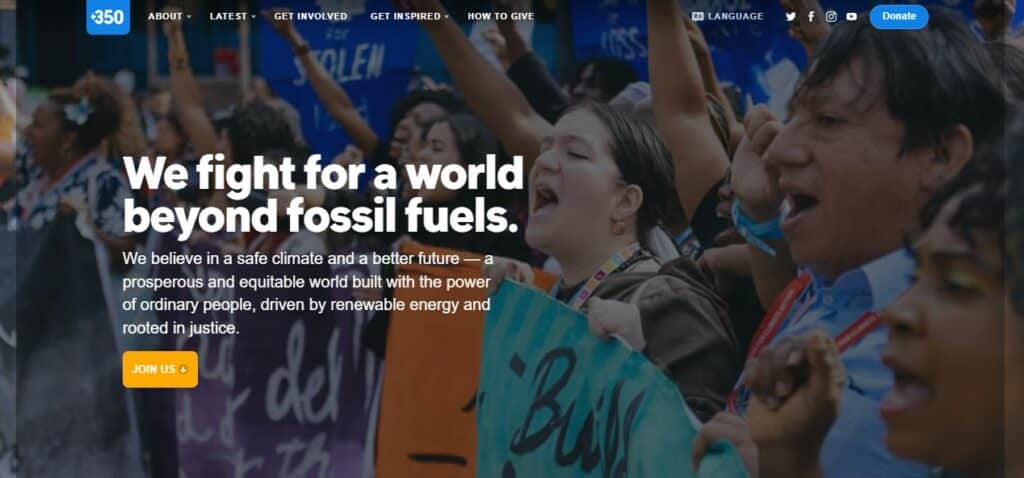
350.org, a trailblazer in the climate action movement, channels its passion for environmental advocacy into a compelling online presence. The website serves as a digital rallying point for those committed to addressing the climate crisis.
Boasting an average loading time of 1.8 seconds, 350.org’s website exemplifies digital agility. The nimble performance is a result of a well-optimized Content Delivery Network (CDN) and judicious image optimization.
The swift website is a strategic asset, directly supporting 350.org’s mission. Visitors experience rapid access to urgent climate information, impactful campaigns, and opportunities for activism, fostering heightened engagement and commitment to the global climate cause.
6. The American Red Cross
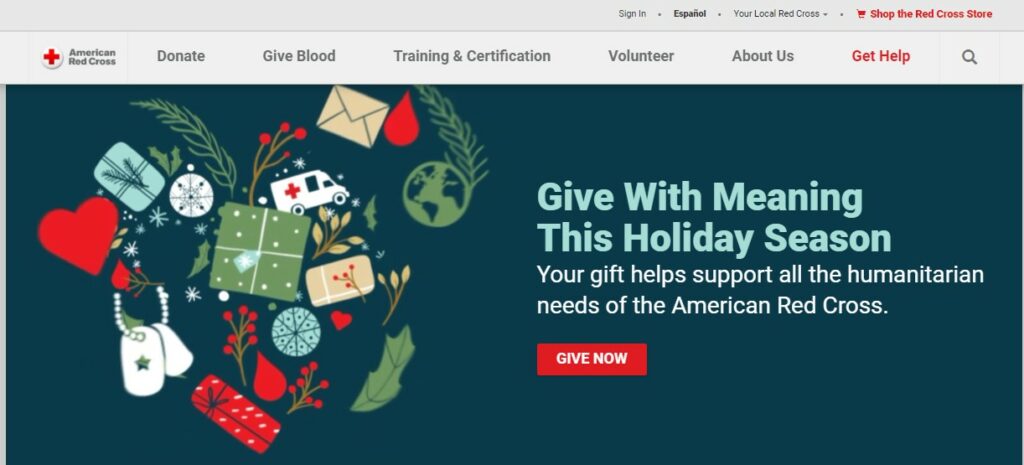
The American Red Cross, synonymous with humanitarian aid, extends its reach through a thoughtfully designed website. This digital hub mirrors the organization’s commitment to alleviating human suffering and providing disaster relief.
With an average loading time of 1.9 seconds, The American Red Cross’s website exemplifies speed and efficiency. The nimble performance is attributed to a strategic implementation of a Content Delivery Network (CDN) and an efficient use of JavaScript.
Beyond technicalities, the swift website plays a crucial role in advancing The American Red Cross’s mission. Visitors experience rapid access to emergency information, donation avenues, and volunteer opportunities, enhancing audience engagement and strengthening the connection to the organization’s lifesaving initiatives.
7. The Salvation Army
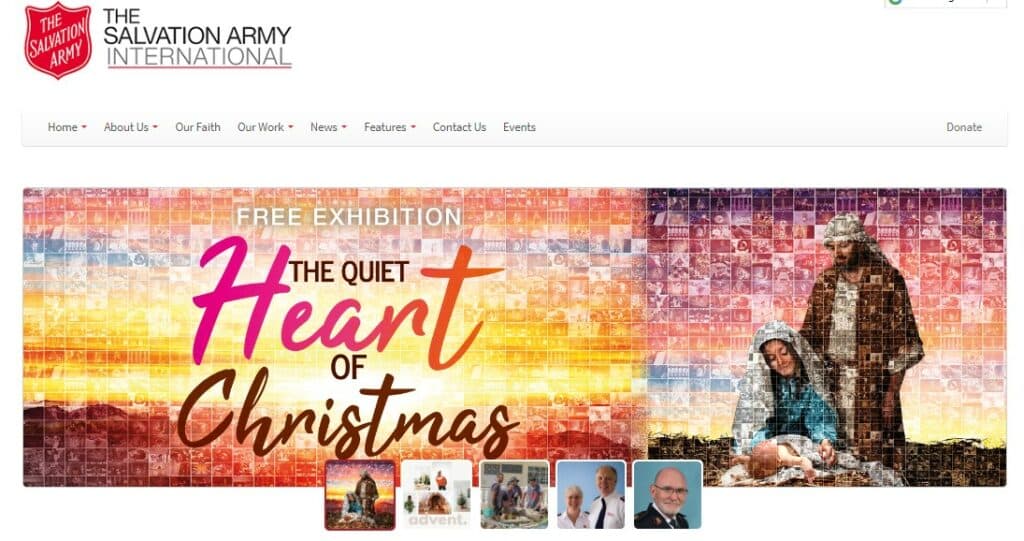
The Salvation Army, a symbol of compassion and community service, extends its mission through a seamlessly designed website. This digital gateway reflects the organization’s commitment to providing support to those in need.
With an average loading time of 2 seconds, The Salvation Army’s website balances speed and purpose. The responsive performance is achieved through the strategic use of a Content Delivery Network (CDN) and meticulous image optimization.
The swift website isn’t just a technical achievement; it directly supports The Salvation Army’s mission. Rapid access to information about their community programs, donation options, and volunteer opportunities enhances audience engagement, fostering a stronger connection with the organization’s charitable initiatives.
8. Habitat for Humanity
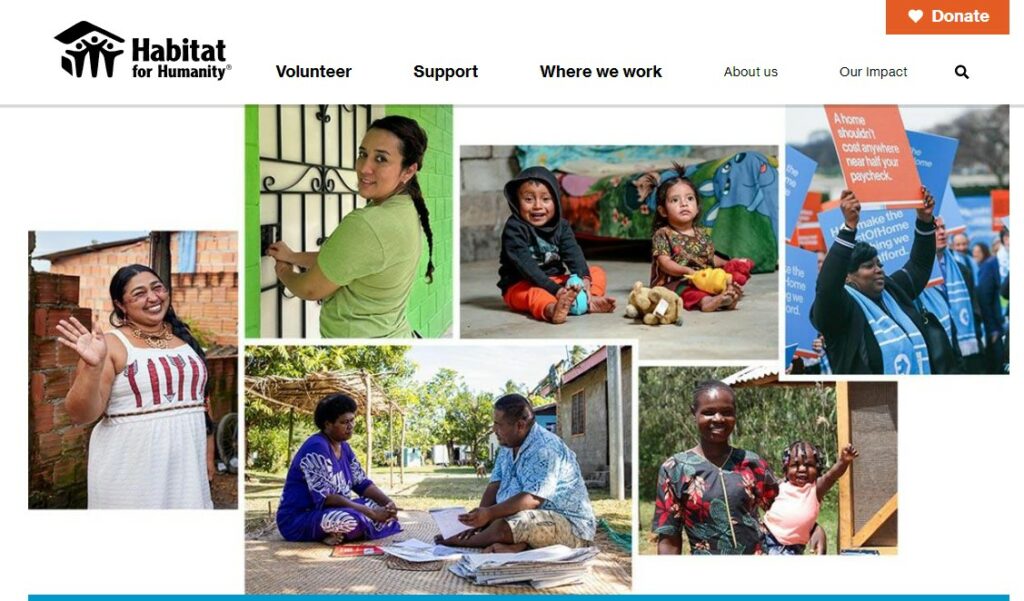
Habitat for Humanity, a cornerstone in the fight against homelessness, extends its impact through a purposeful website. This digital foundation reflects the organization’s commitment to providing affordable housing and building stronger communities.
With an average loading time of 2.1 seconds, Habitat for Humanity’s website achieves a balance of speed and functionality. The nimble performance is attributed to the strategic use of a Content Delivery Network (CDN) and carefully optimized images.
The swift website isn’t just about technical finesse; it directly supports Habitat for Humanity’s mission. Visitors experience rapid access to information about housing initiatives, volunteer opportunities, and donation pathways, enhancing audience engagement and reinforcing the connection to the organization’s community-building goals.
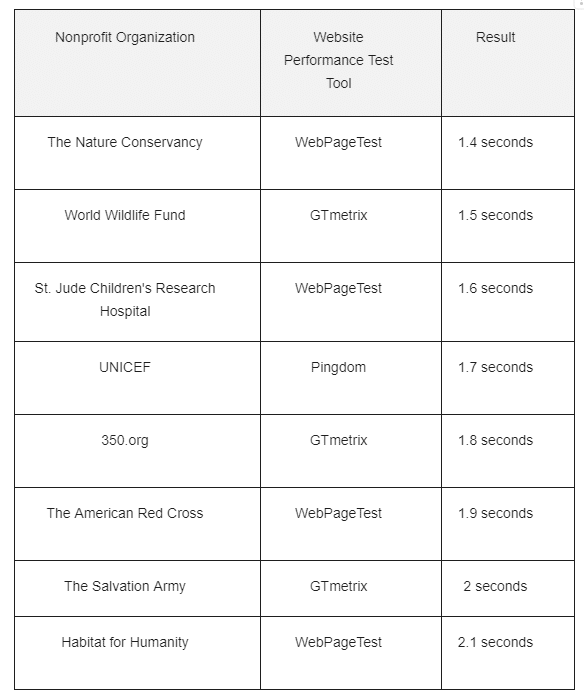
*Please note that these results are for informational purposes only and may not reflect the actual performance of the websites at any given time. Website loading times can vary depending on a number of factors, such as the user’s location, internet connection, and device.
Tips for Nonprofits to Optimize Website Speed
Nonprofits keen on enhancing their website speed should implement a comprehensive set of best practices to ensure a seamless online experience. Consider the following strategies:
Optimize Images:
Compress and optimize images to reduce file sizes without compromising quality. Utilize tools like TinyPNG or ImageOptim to strike the right balance between visual appeal and loading speed.
Utilize Browser Caching:
Leverage browser caching to store static files, reducing load times for returning visitors. Set appropriate expiration dates for different types of content to ensure browsers retrieve updated versions when necessary.
Minimize HTTP Requests:
Streamline your website design to reduce the number of elements requiring separate server requests. Combine CSS and JavaScript files, utilize image sprites, and consider asynchronous loading to minimize the impact of HTTP requests.
Prioritize Critical Rendering Path:
Optimize the order in which page elements load for faster initial rendering. Ensure crucial content, styles, and scripts are loaded first, enhancing the perceived speed and user experience.
Encourage Nonprofits to Assess Their Website Speed
The speed of a nonprofit’s website is not merely a technical metric but a strategic asset. It influences user engagement, fundraising success, and the fulfillment of the organization’s mission. In the digital landscape, where every second matters, website speed is a critical component of a nonprofit’s online presence.
The showcased nonprofits—The Nature Conservancy, World Wildlife Fund, St. Jude Children’s Research Hospital, UNICEF, 350.org, The American Red Cross, The Salvation Army, and Habitat for Humanity—exemplify excellence in website speed optimization. Their commitment to swift and seamless user experiences directly contributes to the success of their respective missions.
As we celebrate the achievements of these nonprofits, we encourage others to prioritize website speed as a fundamental aspect of their digital strategy. Swift and efficient websites not only enhance user experiences but also amplify the impact of nonprofit initiatives in the online realm.
Nonprofits are urged to conduct a thorough assessment of their website speed using tools like Google PageSpeed Insights or GTmetrix. Identifying areas for improvement is the first step toward enhancing the digital experience for supporters and achieving greater online impact.



